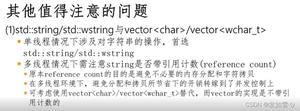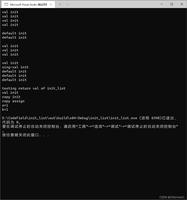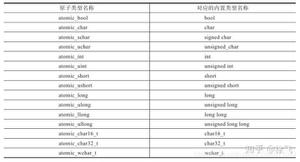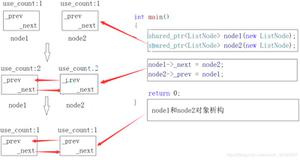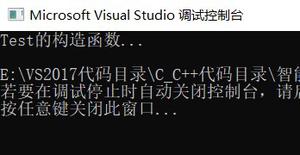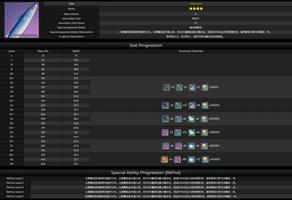c++11&14-智能指针要点汇总
学c++的人都知道,在c++里面有一个痛点,就是动态内存的管理,就我所经历的一些问题来看,很多莫名其妙的问题,最后都发现是内存管理不当引起的。
但像java等其他一些语言则不会有这样的问题,为什么呢,因为它们有很好的处理内存的方法,比如java的垃圾回收机制,现在,我们c++终于也有了智能指针" title="智能指针">智能指针。
1. 什么是智能指针
简单地说,智能指针是用对象去管理一个资源指针,同时用一个计数器计算引用当前指针对象的个数,当管理指针的对象增加或减少时,计数器也相应加1或减1,当最后一个指针管理对象销毁时,计数器为1,此时在销毁指针管理对象的同时,也对指针管理对象所管理的指针进行delete操作。
下面我们介绍两个常用的智能指针std::shared_ptr和std::weak_ptr。
1.1 std::shared_ptr
std::shared_ptr包装了new操作符动态分配的内存,可以自由拷贝复制,基本上是使用最多的一个智能指针类型。
下面是一个代码例子:
#include <memory>
#include <iostream>
class Test
{
public:
Test()
{
std::cout << "Test()" << std::endl;
}
~Test()
{
std::cout << "~Test()" << std::endl;
}
};
int main()
{
std::shared_ptr<Test> p1 = std::make_shared<Test>();
std::cout << "1 ref:" << p1.use_count() << std::endl;
{
std::shared_ptr<Test> p2 = p1;
std::cout << "2 ref:" << p1.use_count() << std::endl;
}
std::cout << "3 ref:" << p1.use_count() << std::endl;
return 0;
}
结果如下:
Test()
1 ref:1
2 ref:2
3 ref:1
~Test()
针对代码解读如下:
std::make_shared里面调用了new操作符分配内存;
第二个p1.use_count()之所以显示为2,是因为增加了引用对象p2,而随着大括号的结束,p2的作用域结束,所以p1的引用计数变回1,而随着main函数的结束,p1的作用域结束,此时检测到计数为1,那就会在销毁p1的同时,调用p1的析构函数delete掉之前分配的内存空间;
1.2 std::weak_ptr
std::weak_ptr有什么特点呢?与std::shared_ptr最大的差别是在赋值的时候,不会引起智能指针计数增加。
weak_ptr被设计为与shared_ptr共同工作,可以从一个shared_ptr或者另一个weak_ptr对象构造,获得资源的观测权。但weak_ptr没有共享资源,它的构造不会引起指针引用计数的增加。同样,在weak_ptr析构时也不会导致引用计数的减少,它只是一个静静地观察者。weak_ptr没有重载operator*和->,这是特意的,因为它不共享指针,不能操作资源,这是它弱的原因。如要操作资源,则必须使用一个非常重要的成员函数lock()从被观测的shared_ptr获得一个可用的shared_ptr对象,从而操作资源。
1.2.1 std::shared_ptr相互引用会有什么后果
代码如下:
#include <memory>
#include <iostream>
class TestB;
class TestA
{
public:
TestA()
{
std::cout << "TestA()" << std::endl;
}
void ReferTestB(std::shared_ptr<TestB> test_ptr)
{
m_TestB_Ptr = test_ptr;
}
~TestA()
{
std::cout << "~TestA()" << std::endl;
}
private:
std::shared_ptr<TestB> m_TestB_Ptr; //TestB的智能指针
};
class TestB
{
public:
TestB()
{
std::cout << "TestB()" << std::endl;
}
void ReferTestB(std::shared_ptr<TestA> test_ptr)
{
m_TestA_Ptr = test_ptr;
}
~TestB()
{
std::cout << "~TestB()" << std::endl;
}
std::shared_ptr<TestA> m_TestA_Ptr; //TestA的智能指针
};
int main()
{
std::shared_ptr<TestA> ptr_a = std::make_shared<TestA>();
std::shared_ptr<TestB> ptr_b = std::make_shared<TestB>();
ptr_a->ReferTestB(ptr_b);
ptr_b->ReferTestB(ptr_a);
return 0;
}
运行结果:
TestA()
TestB()
可以看到,上面代码中,我们创建了一个TestA和一个TestB的对象,但在整个main函数都运行完后,都没看到两个对象被析构,这是为什么呢?
原来,智能指针ptr_a中引用了ptr_b,同样ptr_b中也引用了ptr_a,在main函数退出前,ptr_a和ptr_b的引用计数均为2,退出main函数后,引用计数均变为1,也就是相互引用。
这等效于说:
ptr_a对ptr_b说,哎,我说ptr_b,我现在的条件是,你先释放我,我才能释放你,这是天生的,造物者决定的,改不了;
ptr_b也对ptr_a说,我的条件也是一样,你先释放我,我才能释放你,怎么办?
是吧,大家都没错,相互引用导致的问题就是释放条件的冲突,最终也可能导致内存泄漏。
1.2.2 std::weak_ptr如何解决相互引用的问题
我们在上面的代码基础上使用std::weak_ptr进行修改,如下:
#include <iostream>
#include <memory>
class TestB;
class TestA
{
public:
TestA()
{
std::cout << "TestA()" << std::endl;
}
void ReferTestB(std::shared_ptr<TestB> test_ptr)
{
m_TestB_Ptr = test_ptr;
}
void TestWork()
{
std::cout << "~TestA::TestWork()" << std::endl;
}
~TestA()
{
std::cout << "~TestA()" << std::endl;
}
private:
std::weak_ptr<TestB> m_TestB_Ptr;
};
class TestB
{
public:
TestB()
{
std::cout << "TestB()" << std::endl;
}
void ReferTestB(std::shared_ptr<TestA> test_ptr)
{
m_TestA_Ptr = test_ptr;
}
void TestWork()
{
std::cout << "~TestB::TestWork()" << std::endl;
}
~TestB()
{
////把std::weak_ptr类型转换成std::shared_ptr类型
std::shared_ptr<TestA> tmp = m_TestA_Ptr.lock();
tmp->TestWork();
std::cout << "2 ref a:" << tmp.use_count() << std::endl;
std::cout << "~TestB()" << std::endl;
}
std::weak_ptr<TestA> m_TestA_Ptr;
};
int main()
{
std::shared_ptr<TestA> ptr_a = std::make_shared<TestA>();
std::shared_ptr<TestB> ptr_b = std::make_shared<TestB>();
ptr_a->ReferTestB(ptr_b);
ptr_b->ReferTestB(ptr_a);
std::cout << "1 ref a:" << ptr_a.use_count() << std::endl;
std::cout << "1 ref b:" << ptr_a.use_count() << std::endl;
return 0;
}
运行结果:
TestA()
TestB()
1 ref a:1
1 ref b:1
~TestA::TestWork()
2 ref a:2
~TestB()
~TestA()
预览
由以上代码运行结果我们可以看到:
所有的对象最后都能正常释放,不会存在上一个例子中的内存没有释放的问题;
ptr_a和ptr_b在main函数中退出前,引用计数均为1,也就是说,在TestA和TestB中对std::weak_ptr的相互引用,不会导致计数的增加。在TestB析构函数中,调用std::shared_ptr tmp = m_TestA_Ptr.lock(),把std::weak_ptr类型转换成std::shared_ptr类型,然后对TestA对象进行调用。
1.2.3 std::weak_ptr支持的调用
weak_ptr<T> w; //空weak_ptr可以指向类型为T的对象
weak_ptr<T> w(shared_ptr sp); //与sp指向相同对象的weak_ptr, T必须能转换为sp指向的类型
w = p; //p可以是shared_ptr或者weak_ptr,赋值后w和p共享对象
w.reset(); //weak_ptr置为空
w.use_count(); //与w共享对象的shared_ptr的计数
w.expired(); //w.use_count()为0则返回true,否则返回false
w.lock(); //w.expired()为true,返回空的shared_ptr;否则返回指向w的shared_ptr
1.3 std::unique_ptr
uniqut_ptr是一种对资源具有排他性拥有权的智能指针,即一个对象资源只能同时被一个unique_ptr指向。
1.3.1 初始化方式
使用new
T *pT = new T();
std::unique_ptr<T> up1(pT);
通过make_unique
auto pT = make_unique<T>();
通过move()函数
//up也是一个std::unique_ptr<T>指针
unique_ptr<T> up1 = std::move(up);
1.3.2 unique_ptr不能被复制或者拷贝
unique_ptr<T> up(new T()); //ok
unique_ptr<T> up1(up); //error, can not be copy
unique_ptr<T> up2 = up; //error, can not be assigned
1.3.3 unique_ptr可以移动赋值或者移动拷贝
unique_ptr<T> pT(new T());
unique_ptr<T> pT2 = std::move(pT); //移动赋值,此时pT被销毁,为空
unique_ptr<T> pT3(std::move(pt2)); //移动拷贝,此时pT2被销毁,为空
1.3.4 unique_ptr可以作为函数的返回值
unique_ptr<T> GetPtr(); //function getthe unique pointer
unique_ptr<T> pT = GetPtr(); // ok
1.3.5 使用范例
#include <iostream>
int main()
{
std::unique_ptr<int> pInt;
pInt.reset(new int());
int *p = pInt.release(); //释放所有权
//由于unique_ptr有std::unique_ptr<T[]>的重载函数,所以它可以用来管理数组资源
std::unique_ptr<int[]> pArray(new int[3]{1,3,3});
}
2. 智能指针小结
可以看出,智能指针其实是std::shared_ptr和std::unique_ptr, std::shared_ptr可以有多个引用对象,但不能互相引用,而std::unique_ptr只能有一个引用,不能赋值或者拷贝,但可以移动赋值和移动拷贝,std::weak_ptr实际上是对std::shared_ptr的补充,它并不能对对象进行具体的操作。
注意:shared_ptr,weak_ptr,unique_ptr这些都是模板,并不是指针或者其他的。
以上是 c++11&14-智能指针要点汇总 的全部内容, 来源链接: utcz.com/z/311933.html

